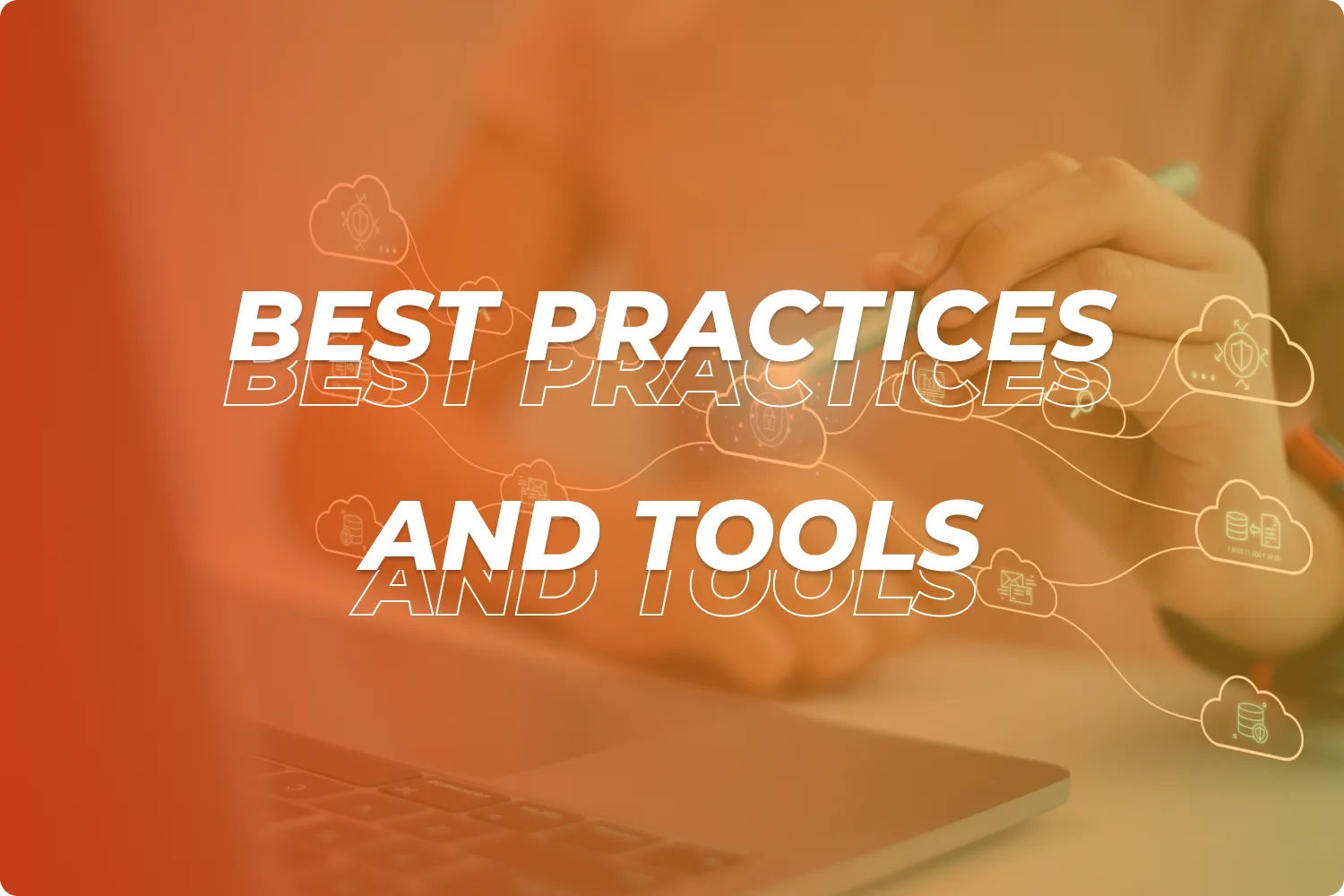How to Future-Proof Your Website: Strategies for Long-Term Success
The lifespan of a website has become a fleeting phenomenon in today’s digital landscape especially with online trends changing every second, every minute. Up till now, there are 5.56 billion internet users worldwide and this amounts to around 67.9% of the global population. With the internet becoming more and more accessible, this number is likely to increase.
What this means is that businesses don’t just need a current website, they must focus on future-proofing their digital presence. To put it simply, future-proofing websites means designing websites in such a way that they can adapt to the ever-evolving technologies and user expectations.
Want to learn what the core strategies are to future-proof your website? Read on to find out how you can ensure scalability, adaptability and security of your website in today’s digital landscape.
Understanding the Need for Future-Proofing
Failure to adapt to the rapid technological shifts means irrelevance for businesses. To take it a step further, the digital market in the UK is extremely competitive. Hence, constant website evolution is no longer a luxury but a need if you want to stay ahead. The only way to drive retention is to improve user experience (UX) which can only be possible if you have an intuitive and fast website.
Another reason why future-proofing is necessary is because it saves you money on frequent overhauls. So, rather than damaging your brand reputation with a dated website, have a modern and reliable site that builds trust. Remember, it’s about ensuring your website remains an asset, not a liability.
Core Strategies for Future-Proofing Your Website
Now that you understand why future-proofing is a must, let’s dive straight into the core strategies:
Design and User Experience (UX)
Regardless of the device people use to access your website, they should get a seamless experience. Remember, adaptability can only be ensured with a responsive design. To maintain relevance, go for minimalistic and scalable designs which will make the updating process simple. If you want to ensure inclusivity and broaden your audience, go for easy accessibility by meeting the WCAG standards. Having AI-driven interactions is a must to enhance user engagement, so make sure to have chatbots and personalised recommendations. Last but not the least, always have a user-centric approach when it comes to your website. Ensure these two things: an intuitive navigation and a clear call to action.
Technology and Scalability
Your CMS system selection is critical to the adaptability of your website, so choose a flexible option like WordPress or Webflow. Then come the third-party services which you must ensure in the shape of seamless API integrations. Businesses must ensure robust performance and to do that you will need scalable frameworks like React and Django. Another way of staying ahead of the curve is to anticipate emerging technologies like PWAs and WebAssembly. For easy updates and feature additions, go for a modular design. Lastly, do not select technologies that cannot grow with your business. Businesses must give priority to those technologies that have a future relevance in their IT framework.
Security and Compliance
For businesses in today’s digital landscape, security is an everyday concern. It is not a one-time fix but an ongoing strategy that involves regular updates, vulnerability tests, and encryption. For your website to be completely secure, you’ll have to get rid of common threats. Employ proactive security strategies to ensure DDoS, malware, and phishing attacks are mitigated.
But that’s not all, there’s user data to be protected so make sure your website is adhering to GDPR, CCPA and other legal standards. It is also your responsibility to ensure safe transactions; so, make sure your website has secure payment gateways that comply with PCI DSS. Lastly, before weaknesses are identified and exploited by cyberattackers, look for them yourself by conducting routine security assessments.
SEO and Content Strategy
We’ve touched upon user experience, website interface, scalability and security; but what about the website content? You can future-proof that too! Search engine optimisation is always evolving, so you need to make sure to adopt agile strategies to remain relevant. A sure-shot way is to have high-quality and engaging content; no visitor can ignore that!
Always rely on analytics such as user behaviour when you make content decisions. In this way, you can develop a robust content strategy that will be consistent with what the user wants and relevant too. So not only will you be making data-driven decisions, but you will also be ensuring your website’s visibility and user engagement. Lastly, look for reach expansion and engagement through social media integration.
Performance Optimisation
Don’t we all just hate when images don’t load on websites! It kills our interest and excitement to use that site. If you don’t want that to be the case for your business website, prioritise speed and efficiency. Here are three ways to do it: optimise images, lazy loading, and CDNs. Evaluate the performance of your website through audits and be prompt in identifying and addressing bottlenecks. The quicker your loading times are, the more likely your website is to appear in top SEO rankings.
Continuous Testing and Optimisation
As we’ve established, future-proofing is a continuous phenomenon. Once you put the basics in place, you’ve got to keep a check on them as they’ll need improving or updating sooner rather than later. That’s where the A/B testing and user feedback comes in. Always keep a track on what resonates with your audience. Other key metrics to track are page load times and bounce rates, they are the perimeter of your website’s effectiveness.
Regular audits are a must, and they must be comprehensive in nature, focusing on SEO, security, and accessibility of your website. Tools like Google Analytics and security scanners are always helpful as they ensure ongoing optimisation. Remember, long-term success of your website relies on a continuous testing and refining process.
Leveraging Emerging Technologies
Now that you’ve looked at the core strategies for future-proofing a website, let’s shift focus towards another dimension: emerging technologies. Want to learn how leveraging emerging technologies can prepare you for long-term success? Here’s all you need to know:
- Artificial Intelligence (AI) and Machine Learning: Rather than giving the users generic content, what if you could provide them personalised information that’s tailored to their choices and behaviour? AI is a perfect tool to enhance personalisation in website content. While you’re making life easier for users, you must also use machine learning to automate tasks such as customer service. Have 24/7 chatbots that can engage with customers and solve their queries.
- Virtual Reality (VR) and Augmented Reality (AR): Give your customers a chance to interact with products or environments they are seeing on your website. To do that, leverage VR and AR technologies that create immersive experiences. Imagine if your customers could use VR to try on a dress virtually, or visit a real estate property they are interested in. All this enhances engagement and provides you a competitive edge, putting you ahead in the market.
- Blockchain for Enhanced Security and Trust: Online transactions on business websites are often labelled as insecure or lacking transparency. If you were to provide your customers a strong and transparent way to conduct online transactions, your business’s trust and reliability will increase ten-fold. So, use blockchain technology that’s secure, and offers you temper-proof records for this purpose.
- Internet of Things (IoT) Integration: Imagine if you could connect websites to smart devices? Won’t that increase the capabilities of that website drastically? One way that could be useful is having on-the-go, real-time data collection. When customers can interact with the physical word, you will have features like remote monitoring and control.
- Progressive Web Apps (PWAs): Mobile phones are the present and the future of website surfing, so make it easier for users to access your website through smartphones. PWAs are a great way to future-proof this aspect of your website. They will ensure fast loading times, offline functionality and native app-like experience by blending the best of mobile apps and websites. Imagine an emerging technology that has no development costs, and it improves user experience, regardless of the device being used.
- Voice Search and Natural Language Processing: Typing in searches is becoming out of date with voice searches taking over. So, keeping the future in mind, have a voice search option with natural language processing inbuilt. Let the users have a personalised experience and improved search accuracy. Make your website accessible through voice commands.
- Cloud Computing and Serverless Architecture: As your business grows, you will inevitably have a larger number of traffic and data to deal with. A perfect solution for this is to have cloud computing. Not only is it scalable and flexible, but cost-effective too. As there are no servers involved, there is no real architecture for maintenance overhead. So, developers can shift their focus on innovation and growth.
Practical Implementation and Maintenance
Strategies and technologies are one part of the puzzle; the other part deals with the practical implementation of future-proofing a website. Here’s how it’s done:
- Establishing a Clear Roadmap: Before getting started, businesses must make a clear strategic plan. In that plan, be precise about the objectives, the long-term goals and milestones you’re looking to achieve along the way. Do not be vague about tracking progress, always keep it measurable with well-defined KPIs. By doing this, you can always track back and see whether you are on time with the progress or if improvement is required.
- Investing in Staff Training: As you future-proof your website, you must do the same for the personnel involved. So, train them regularly to meet the ever-evolving dynamics of technology and the digital landscape. Encourage them to take learning as part of their job and offer them support certifications in new tools.
- Regular Maintenance and Updates: Themes, plugins, and software need updating and maintenance. You will have to ensure that by conducting it in a routine manner. Updates can be automated as well, if and where applicable. The idea is for you to identify and address weaknesses and be optimal with performance at the same time.
- Continuous Monitoring and Analytics: Several tools are out there that will help you track both the website performance and user behaviour. When you monitor metrics like page load times, bounce rates and conversion rates, you’ll automatically know where the improvements are needed.
- Addressing Business Challenges: Future-proofing a website will have challenges like legacy systems, budget constraints, and security concerns. So, plan it out; gradually migrate the outdated systems, while ensuring that the critical upgrades are made first. Never compromise on having robust security measures throughout the process.
- Legal Compliance: As you make changes to your website, there will be a concern of legal compliance. So, ensure that it meets the industry standards like GDPR, CCPA, etc.
Best Practices and Tools
- By managing code changes and streamlining collaboration, use Git for effective version control.
- Adaptability is king when it comes to a CMS platform, so go for WordPress, Drupal as they offer flexibility.
- Look for those cloud hosting services that offer scalability and reliability like AWS, Azure, Google Cloud, etc.
- Firewalls and SSL certificates are the best tools for securing your site. Google PageSpeed is best when it comes to monitoring performance insights.
- Team collaboration is best ensured by tools such as Slack and Trello.
- For content flexibility and omni-channel delivery, go for a headless CMS.
Final Thoughts
Think of future-proofing your website as a strategic investment that will provide you with sustained success. The key lies with adaptability and continuous improvement. Hence, embrace the emerging technologies but do not compromise on having a robust security apparatus. In this way, you’ll ensure your website remains a valuable asset, rather than becoming an irrelevant liability in a competitive market.
If you’re ready to future-proof your website, FunctionEight is here to provide expert guidance. With over 20 years of IT support experience, we don’t just help you navigate complexities—we develop tailored strategies that drive long-term success for your website and business. Contact us today, and let’s future-proof your online presence together.





